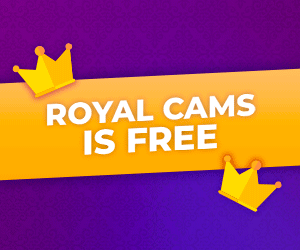The moment you decide to learn a new skill online, you’re immediately bombarded with endless platform options, each promising to transform you into an expert. I remember staring at my screen, paralyzed by choice, wondering whether to invest in Udemy’s $12.99 Python course or commit to Coursera’s months-long Data Science specialization. After spending over $3,000 across these platforms and helping dozens of professionals navigate them, I’ve discovered that each serves fundamentally different learning needs—and choosing wrong can cost you hundreds of hours and dollars without delivering real-world results.
Udemy operates like a digital bazaar where anyone can sell courses, creating both incredible opportunities and buyer beware situations. The platform shines for targeted, immediate skill acquisition—when I needed to learn Adobe Premiere Pro for a last-minute work project, their $14.99 course had me editing professional videos within 48 hours. The quality varies wildly, but gems like Jose Portilla’s Python Bootcamp deliver university-level instruction at bargain prices, especially when caught during Udemy’s frequent sales. Their strength lies in practical application; I’ve taken courses where the final project involved building an actual e-commerce site or analyzing real COVID-19 datasets. The lifetime access model means you can revisit materials years later—a lifesaver when I suddenly needed to recall Tableau tricks learned three years prior.
Coursera brings academic rigor to online learning through partnerships with Stanford, Google, and other elite institutions. Their structured programs like the IBM Data Science Professional Certificate mimic college coursework with weekly deadlines and peer-reviewed assignments. When I completed their Machine Learning specialization by Andrew Ng, the mathematical depth surpassed my actual graduate school courses. The platform excels for career changers needing recognized credentials—their Google IT Support Certificate has placed thousands in tech jobs. Coursera’s grading systems force accountability; failing a programming assignment because my code didn’t pass automated tests taught me precision no YouTube tutorial could. The trade-off is intensity—their month-long courses often require 10+ hours weekly, and their discussion forums lack the vibrancy of Udemy’s Q&A sections.
Skillshare carves its niche in creative and freelance skills through project-based, community-driven learning. Unlike lecture-heavy platforms, Skillshare emphasizes doing—their graphic design courses have you creating actual logos for fictional clients, while writing classes involve publishing work for peer feedback. I discovered my signature illustration style through a Skillshare course on finding your artistic voice, something no technical tutorial could teach. The platform’s strength lies in teaching the creative process itself; their “Creative Bootcamps” guide you from concept to finished portfolio piece over several weeks. The community aspect feels genuinely supportive—I’ve received detailed critique from working professionals on my photography projects, something rare on other platforms. At $168 annually, it’s a bargain for visual learners, though less ideal for structured certification seekers.
Content depth separates these platforms dramatically. Udemy’s à la carte model means you might find a brilliant 40-hour Blender 3D course alongside superficial two-hour overviews on the same topic. Coursera’s university partnerships ensure consistent quality but can feel overly academic—their web development courses emphasize computer science theory over immediate coding application. Skillshare’s project-based approach skips fundamentals at times; I once took a logo design course assuming Illustrator knowledge that I lacked.
Teaching styles reveal each platform’s philosophy. Udemy instructors like Colt Steele structure courses like hands-on apprenticeships, walking you through building projects step-by-step. Coursera’s professors often teach like they’re in lecture halls, with dense slides and theoretical frameworks. Skillshare teachers—many working creatives—share workflows rather than rigid curricula, showing how they actually solve problems in their studios.
Certification value varies significantly. Coursera’s certificates from name-brand institutions carry weight on LinkedIn—my Google Data Analytics Certificate helped land consulting work. Udemy’s completion certificates satisfy HR checkboxes but impress few hiring managers. Skillshare doesn’t even offer certificates, instead encouraging portfolio creation—their value lies in what you can show, not what you can claim.
The mobile experience impacts real-world usage. Udemy’s offline viewing saved me during subway commutes when preparing for certification exams. Coursera’s app struggles with complex programming assignments but excels for video lectures. Skillshare’s clean interface makes sketching along with drawing tutorials surprisingly practical on tablets.
Pricing models dictate commitment levels. Udemy’s one-time purchases encourage skill sampling—I’ve taken courses on everything from SEO to songwriting without subscription guilt. Coursera’s $59/month subscription pressures completion—I rushed through courses to save money, sometimes compromising learning. Skillshare’s annual fee promotes habitual creation; their daily “creative streak” counter kept me drawing daily for months.
Corporate training suitability differs wildly. Udemy Business provides cost-effective technical training for teams—we used it for company-wide Python upskilling. Coursera for Business delivers structured leadership programs recognizable to executives. Skillshare Teams works best for creative departments needing inspiration rather than hard skills.
Niche offerings reveal hidden strengths. Udemy’s breadth includes obscure but valuable topics like HVAC drafting or forensic accounting. Coursera’s MasterTrack programs offer actual graduate course credits—I applied Arizona State University credits from their Coursera program toward my MBA. Skillshare’s “Workshops” provide live feedback from instructors, bridging the online/IRL gap.
The platforms evolve differently. Udemy adds trendy topics quickly—they had ChatGPT courses within weeks of its release. Coursera builds comprehensive degree alternatives—their computer science bachelor’s equivalents rival many universities. Skillshare doubles down on creative community, recently adding collaborative projects.
Choosing the right platform depends on your learning personality. Udemy suits curious generalists and tactical learners needing specific skills fast. Coursera serves degree-seekers and career changers needing structured, credentialed paths. Skillshare fits visual creators and freelancers building portfolios.
The smartest approach combines platforms strategically. I used Coursera for theoretical machine learning foundations, Udemy for hands-on TensorFlow implementation, and Skillshare for data visualization storytelling. This triangulation mirrors how professionals actually build expertise—through varied lenses and applications.
What no platform can replace is self-directed practice. The courses that transformed my career weren’t the ones I watched passively, but those where I built real projects, failed publicly in discussion forums, and iterated based on feedback. Whether through Udemy’s Q&A, Coursera’s peer reviews, or Skillshare’s community critiques, the human element remains the true differentiator.
In an era of content overload, these platforms succeed when they help filter signal from noise. The best choice isn’t about platform prestige but which ecosystem keeps you consistently engaged and applying knowledge. Because ultimately, skills aren’t acquired through consumption—they’re forged through repeated, guided doing. And that’s where all three platforms, in their distinct ways, can deliver—if matched to how you actually learn.







